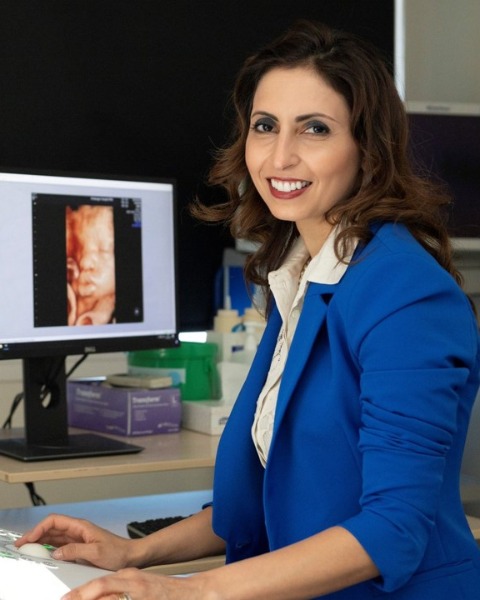Poster Session 2
(501) Prevention of Preterm Birth in Twin Pregnancies: International Delphi Consensus

Hiba J. Mustafa, MD (she/her/hers)
Director of Fetal Surgery, Director of Placenta Accreta Spectrum Program
Indiana University and Riley Children's Hospital
Indianapolis, IN, United States- JS
Jameela Sheikh, MBBCH
Guy’s and St Thomas’ Hospital NHS Foundation Trust
London, England, United Kingdom 
Vincenzo Berghella, MD (he/him/his)
Professor, Director
Sidney Kimmel Medical College of Thomas Jefferson University
Philadelphia, Pennsylvania, United States
William A. Grobman, MBA, MD
Professor
The Ohio State University
Columbus, Ohio, United States.jpg)
Alireza A. Shamshirsaz, MD (he/him/his)
Department Director, Professor of Surgery
Fetal Surgeon Chief, Division of Fetal Medicine and Surgery Director of the Maternal Fetal Care Center Director of the Perinatal Surgery Fellowship Professor of Surgery, Boston Children’s Hospital Harvard Medical School
Boston, Massachusetts, United States- SG
Sanne J. Gordijn, MD, PhD
Gynecologist perinatologist (MFM)
University Medical Center Groningen
Groningen, Groningen, Netherlands - WG
Wessel Ganzevoort, MD, PhD
Amsterdam University Medical Centers
Amsterdam, Groningen, Netherlands 
Amanda Roman, MD, MPH
Associate Professor
Department of Maternal-Fetal Medicine, Thomas Jefferson University Hospital
Philadelphia, Pennsylvania, United States
Asma Khalil, MD
Professor of Maternal Fetal Medicine
Fetal Medicine Unit, St George's Hospital, St George's University of London
London, England, United Kingdom
Submitting Author and Presenting Author(s)
Coauthor(s)
To use a Delphi process to gain insight into approaches to the management of preterm birth (PTB) in twin pregnancies, including those with twin-to-twin transfusion (TTTS).
Study Design:
A three-round Delphi procedure was conducted among an international panel of experts to assess their approach to PTB prevention, monitoring, and management strategies in twins. Experts were chosen based on expertise, relevant publications, or affiliations. Response options included multiple-choice answers or a 5-point Likert scale. A priori, a cut-off of ≥70% was used to define “consensus”.
Results:
115 experts joined the first round and 94/115 (82%) completed the subsequent rounds. There was representation from 22 countries on five continents. At least 70% performed routine screening of cervical length (CL) via transvaginal (TV) scan between 18 and 23 weeks with CL≤25 mm to diagnose a short cervix in twin pregnancies. In twin pregnancies with short CL, most experts offered vaginal progesterone and not pessary or expectant management. There was significant agreement but no consensus to offer cerclage for CL≤10. In twin pregnancies with asymptomatic dilated cervix, consensus was reached for cerclage placement as well as adjunctive practices surrounding the cerclage placement procedure. Similarly, at least 70% of experts agreed that serial TV CL assessment was warranted in those who had a current singleton pregnancy with a previous twin pregnancy requiring physical exam-indicated cerclage. In those with TTTS, a laser procedure generally was offered by most regardless of whether the cervix was short or dilated. For those with TTTS and a short CL, most experts would recommend cerclage or progesterone but not pessary or expectant management. However, no consensus was reached on PTB prevention measures in TTTS with cervical dilation.
Conclusion:
This Delphi shows the practice variations among obstetric providers worldwide in evaluations and management of PTB in twin pregnancies, which often differs from what is recommended by national and international societies.

